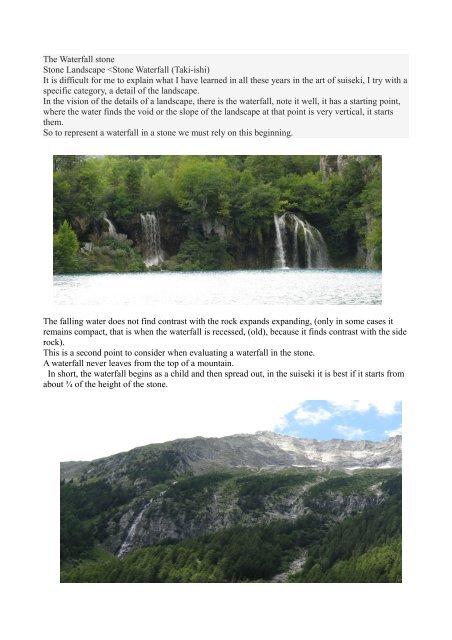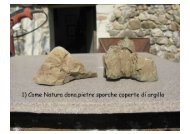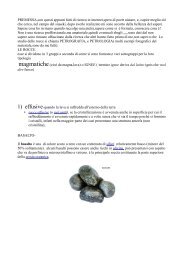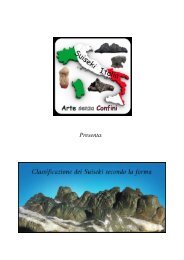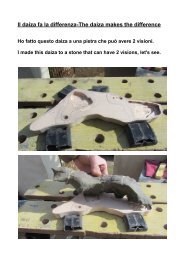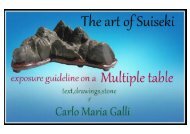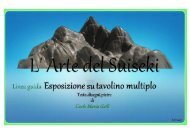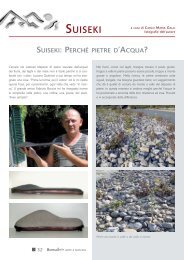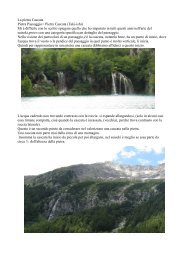Suiseki "pietra cascata" (tradotto in Inglese)
Considering that not all stones can be Suiseki, here is a brief explanation of what is meant by cascading stone
Considering that not all stones can be Suiseki, here is a brief explanation of what is meant by cascading stone
- No tags were found...
Create successful ePaper yourself
Turn your PDF publications into a flip-book with our unique Google optimized e-Paper software.
The Waterfall stone<br />
Stone Landscape
There are 3 types of comparison we can see <strong>in</strong> the stone, a young, old and empty waterfall:<br />
The young waterfall is usually represented with the limestone (white) on the stone that presents<br />
itself at the usual level of it.<br />
Old waterfall, it is carved <strong>in</strong>to the rock, from the idea of hundreds of years that water works the<br />
rock.
Empty waterfall, the oldest, harder to understand, the water dug <strong>in</strong>to the rock, then stopped com<strong>in</strong>g.<br />
Obviously, the more the cascade falls down, the more it moves, the better it is, then if it has<br />
branches and is recessed, it makes the representation more real.
The suiseki must represent what <strong>in</strong> Nature exists, so a cascad<strong>in</strong>g stone often represented by<br />
limestone (white), CAN NOT go beyond the top of the stone, the possibility that a waterfall arrives<br />
from the top of a mounta<strong>in</strong> (mounta<strong>in</strong>) is given by a natural situation, as it could be snow, melt<strong>in</strong>g<br />
ice.<br />
Here are some examples I found of stones represent<strong>in</strong>g a waterfall,
Some comparison between stone and nature.
From my collection, the waterfall suiseki stones


